Norton Rotary F1 JPS
With Ian Falloon
Although some manufacturers expended considerable time and cost on development, the Wankel rotary engine always struggled to find acceptance amongst the conservative motorcycle buyer. The first rotary motorcycle, the Hercules W2000, promised much but was never available in sufficient quantities, while the thirsty Suzuki RE5 arrived in the middle of the oil crisis of 1974 and 1975.
It was left to Norton to fly the flag for the rotary, a story that began back in the 1960s when Triumph considered a Wankel rotary as a replacement for their ageing parallel twin. Norton/Triumph continued to develop the rotary through the 1970s, and in 1984 it gained water cooling.
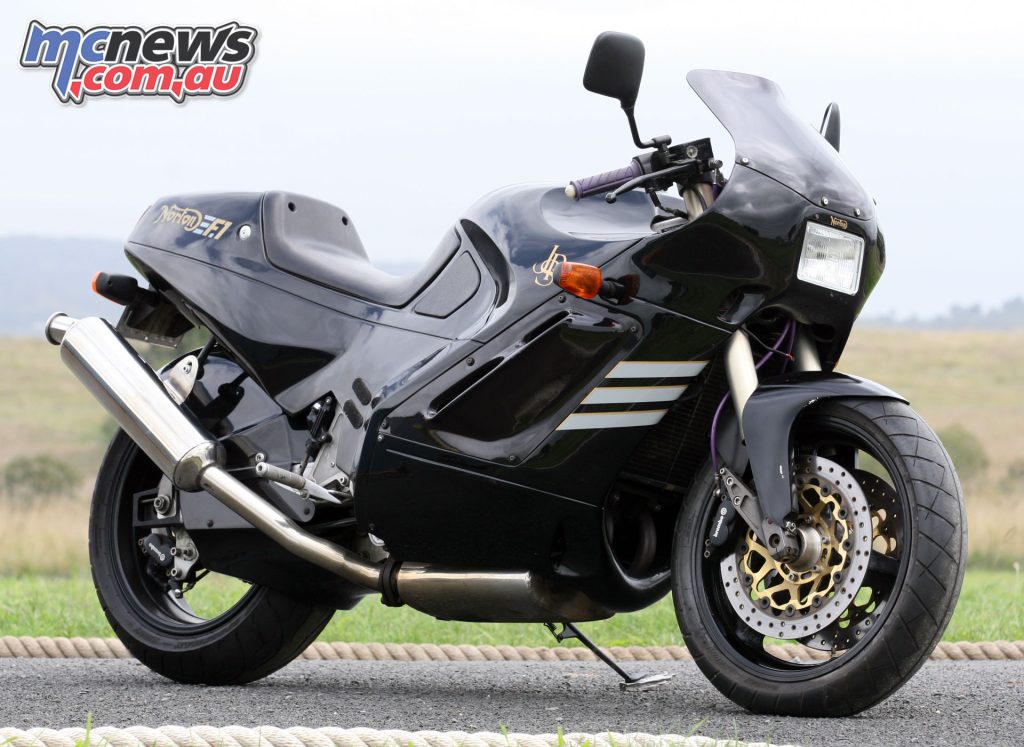
Norton’s first production rotary motorcycle was the Interpol II. Codenamed the P41 this police model had a BMW fairing and about 500 were produced between 1984 and 1989.
After Philippe Le Roux acquired Norton from Dennis Poore’s Manganese Bronze Holdings in 1988 the first thing he did was build 100 examples of the P43 Classic, a civilian version of the Interpol II. Following the P43 Norton released the P52 Commander, also a Police motorcycle. This evolved into the unsuccessful touring Commander Civilian P53 of 1989-1992.
At the same time the Norton rotary was being developed into a competitive racing motorcycle. After some promising outings in 1988, Steve Spray gained JPS sponsorship and went on to win the 1989 British F1 title and 750 cc Supercup.
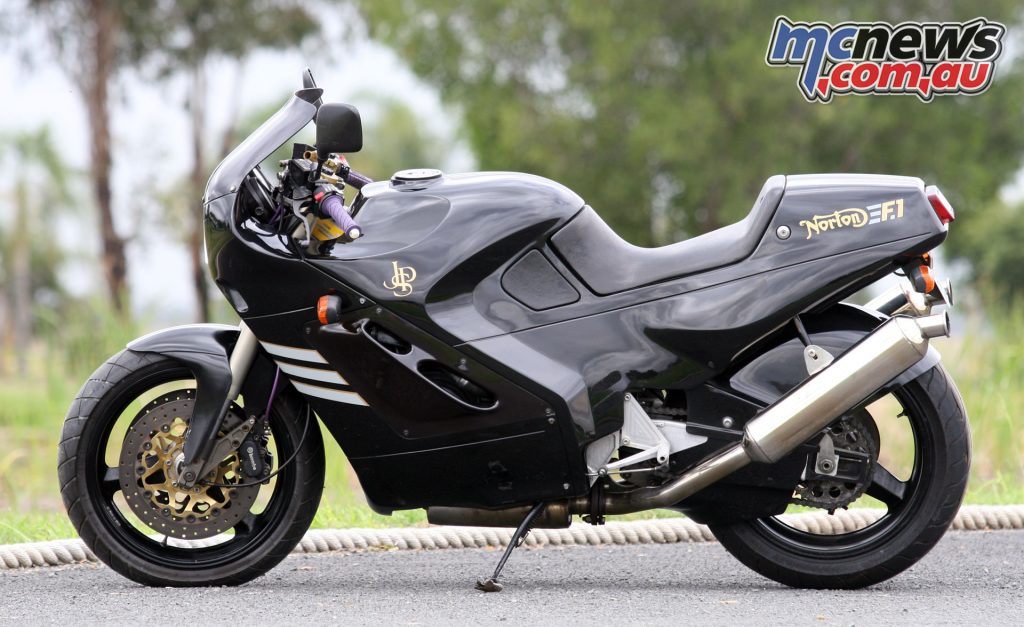
The British motorcycle land speed record of 307 km/h was also set with a Norton rotary in 1991 and in 1992 Steve Hislop won the Isle of Man Senior TT on the final racing version, the NRS588.
By 1990 Norton was on the brink of financial disaster, no one wanting the Commander, but with spectacular success in the British Championships during 1989 it seemed logical to create a race replica. The resulting P55 “F1” was the culmination of twenty years of rotary development, and one of the outstanding motorcycles of the era.
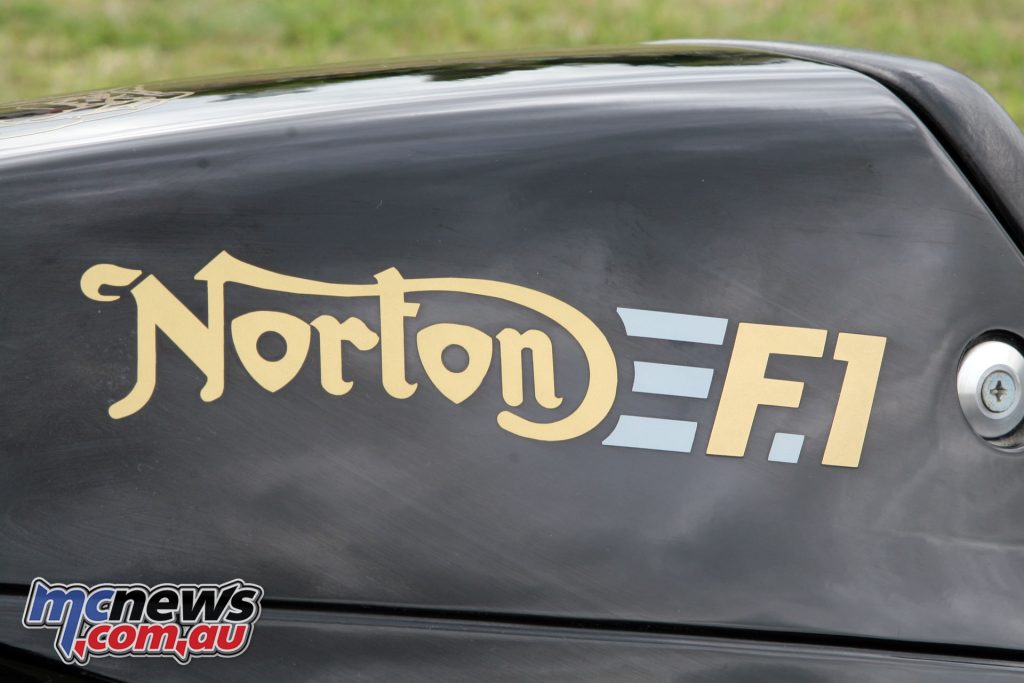
The basis of the P55 was the F1 racer, and Seymour-Powell created new fully-enclosed bodywork. But for the rectangular Yamaha FZ250 headlight the styling has stood the test of time remarkably well. Powering the F1 was a 588 cc twin rotor water-cooled Wankel engine mated to an integrally-cast gearbox with a Yamaha FZR1000 five-speed transmission and hydraulic clutch.
With a pair of Mikuni BDS 34 downdraft carbs 95 horsepower at 9500 rpm was produced in a smooth linear fashion, with absolutely no vibration. But for the excessive heat and thirst it could have been the perfect motorcycle engine.
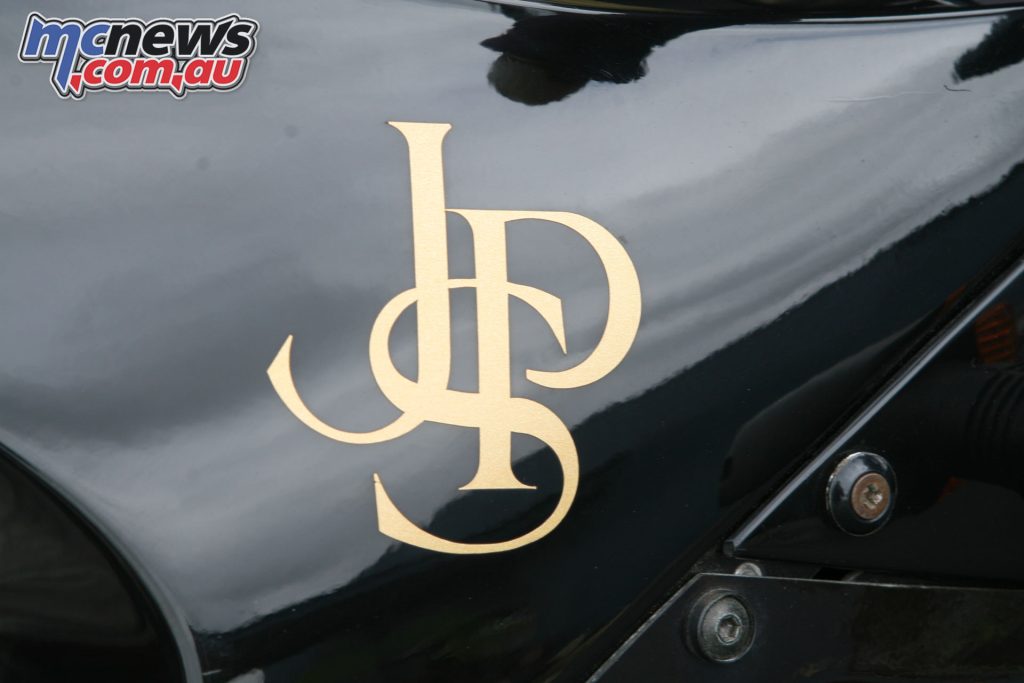
The heat was magnified as it couldn’t escape the tight fitting fully-enclosed fairing and made living with the F1 on a daily basis difficult. At slow speed the radiator heated the airbox, feeding hot air to the carburettors, while engine heat began to heat the fuel in the tank. The F1 was not a motorcycle suited to riding in stop start traffic.
There was nothing wrong with the F1 chassis. A Spondon twin spar aluminium frame straddled the Wankel engine, and suspension was Dutch White Power; an upside down front fork and Monoshock rear.
The front brakes were state of the art for 1991, with Brembo four-piston calipers and 320 mm fully floating cast-iron rotors. Rolling on a pair of wide 17 inch three-spoke alloy wheels the 192 kg F1 beckoned for the open road, preferably in the chilly north of England where the engine wouldn’t overheat.
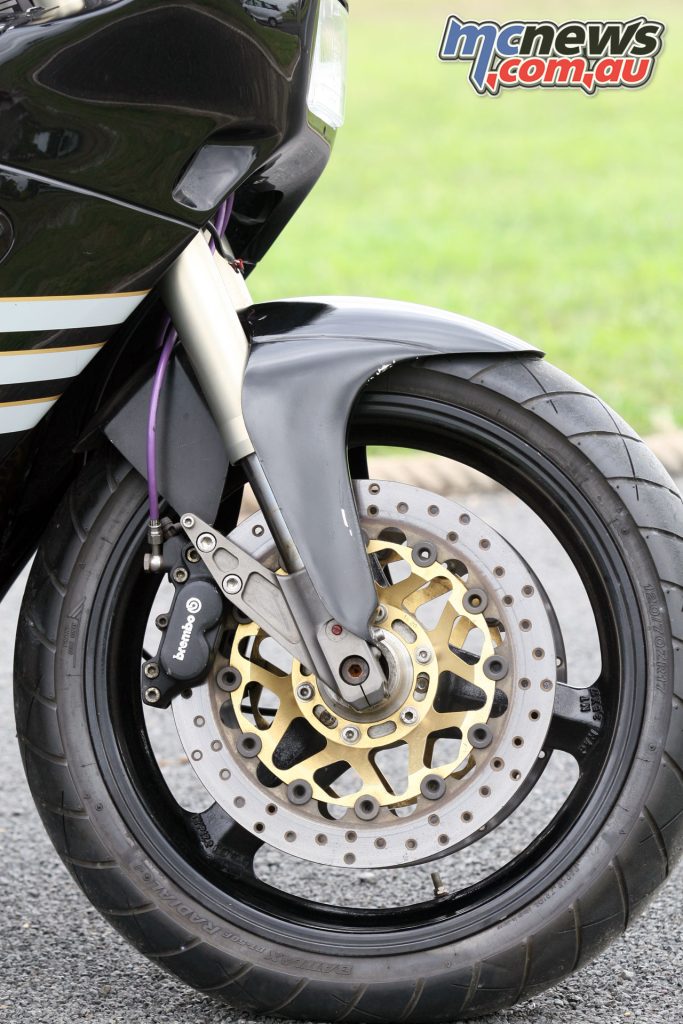
Fortunately Norton was no longer allied to Joe Lucas, the Prince of Darkness, and most of the electrical equipment was gleaned from a Yamaha FZ1000.
The F1 really missed the mark as it wasn’t developed from an environmentally friendly point of view. Whereas the touring Commander with SU carbs even passed strict German emissions tests, the Mikuni carbs of the F1, combined with the excessive overheating, resulted in emissions of immoral proportions.
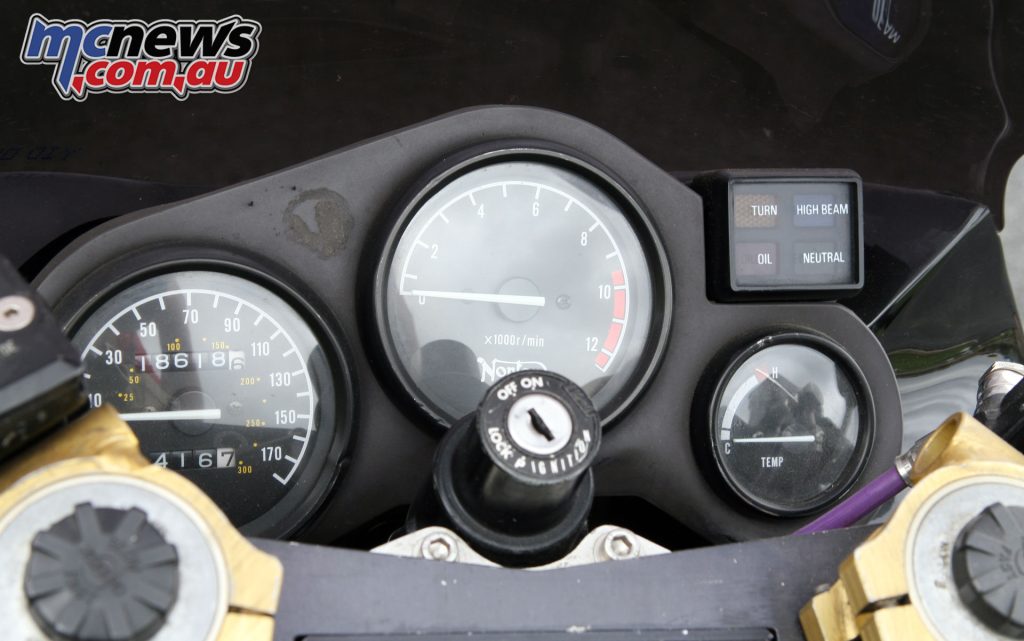
Ultimately the F1 could only be sold in Britain, and even then only high-flying, non-riding, partying London celebrities seemed interested. After building about 130 examples sales came to a standstill. The 1991 F1 Sports was the final Norton Rotary.
Built to use up hard to sell spare parts, the F1 Sports (or TT) no longer had fully enclosed bodywork and all 66 examples were sold by subscription. Now the F1 is seen not only as a legacy to the success of the RCW588 as a racing machine, but also the end of the magnificent era when Norton built some of the world’s best sporting motorcycles.

Norton F1 JPS Specifications
| Norton F1 JPS Specifications | |
| Engine | Twin chamber rotary |
| Capacity | 588 cc |
| Compression Ratio | 9.0:1 |
| Cooling System | Liquid cooled |
| Induction | Two ~A34 mm Mikuni BDS downdraft carburettors |
| Max Power | 67.1 kW / 90 hp @ 9000 rpm |
| Max Torque | 77.3 Nm / 7.88 kgf-m / 57 ft-lb @ 7500 rpm |
| Transmission | Five-Speed |
| Final Drive | Chain |
| Front Suspension | WP upside-down forks, compression and rebound damping adjustable. |
| Rear Suspension | WP monoshock, compression and rebound damping adjustable. |
| Front Brakes | Dual 320 mm discs |
| Rear Brakes | Single 230 mm disc |
| Front Tyre | 120/79 ZR17 |
| Rear Tyre | 170/60 ZR17 |
| Dry Weight | 192 kg |
| Fuel Capacity | 20 L |
| Consumption average | 7.8 L/100 km |
| Top Speed | 233 km/h |
Check out more historical motorcycle articles by Ian Falloon here (link).























